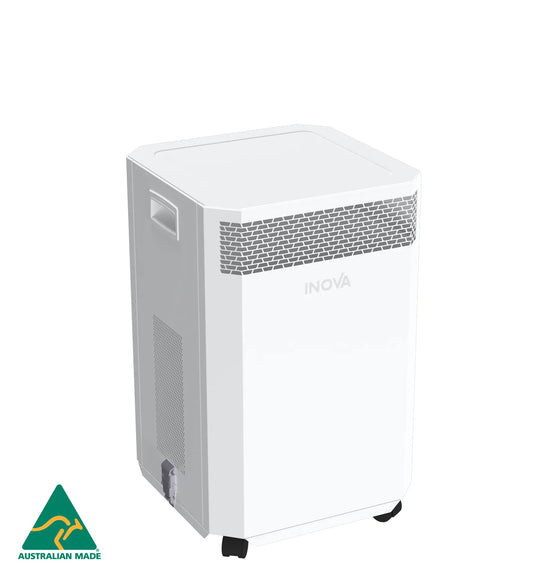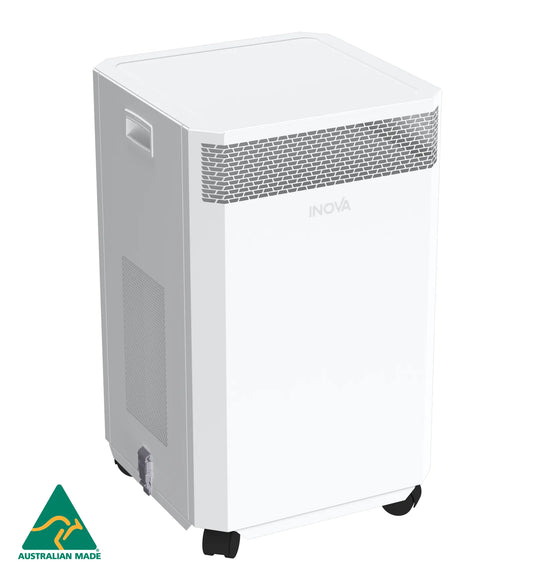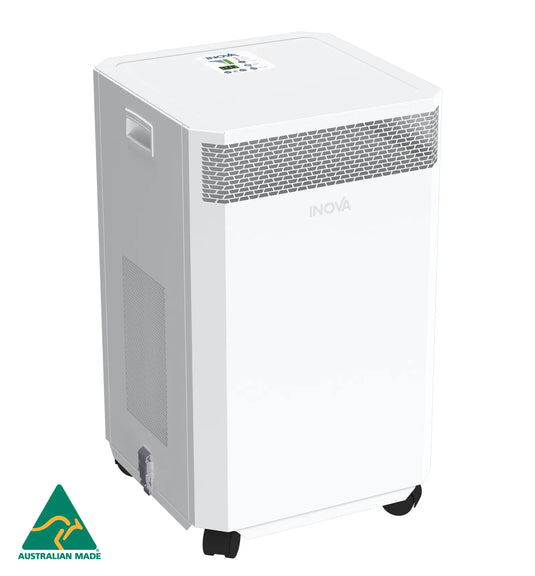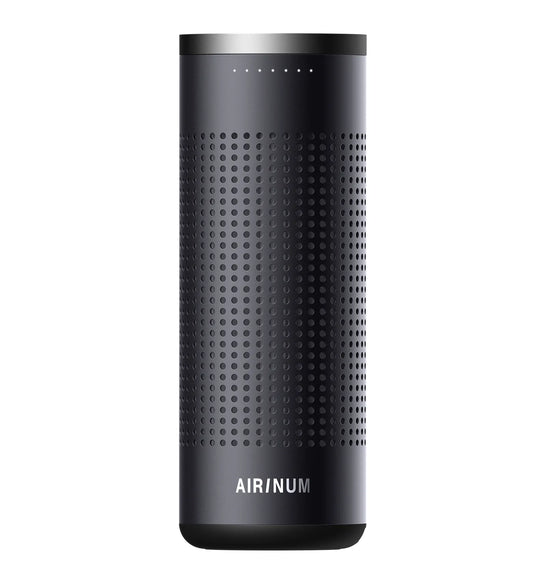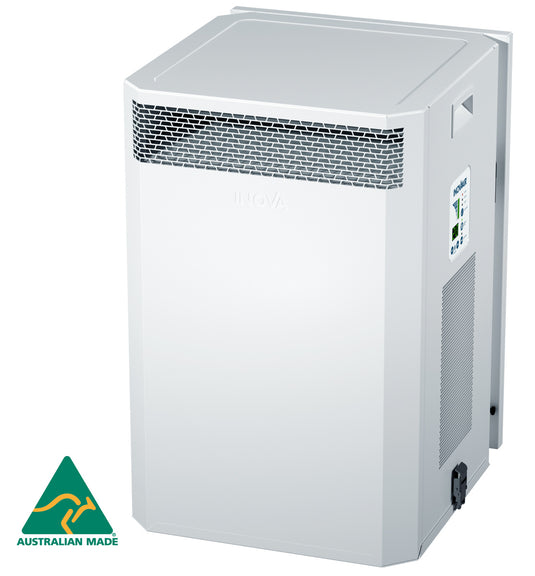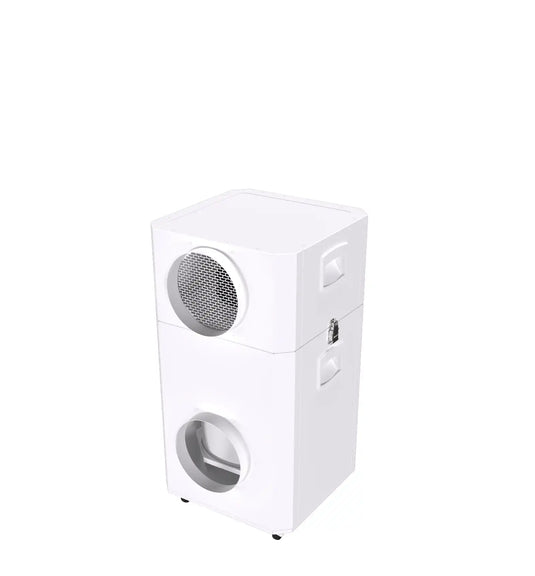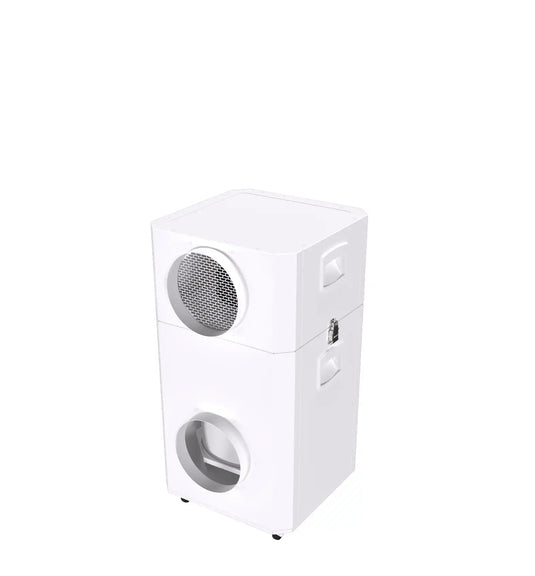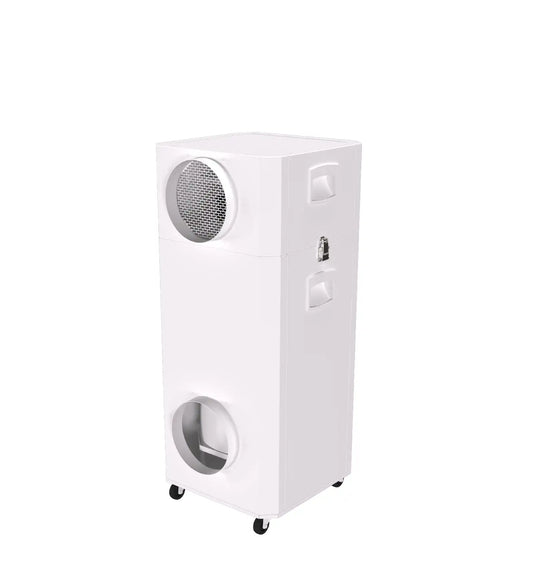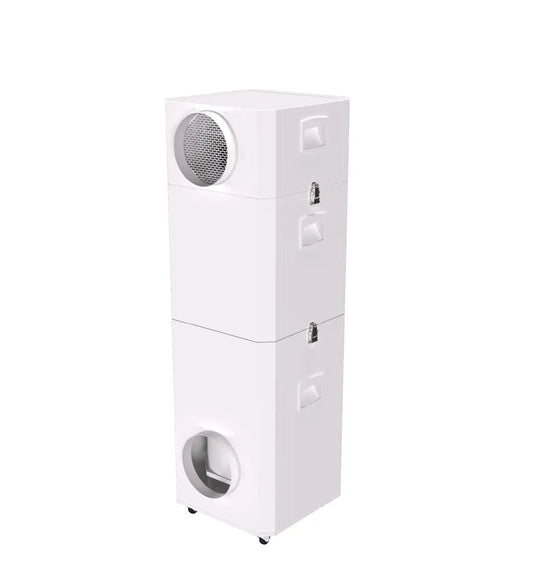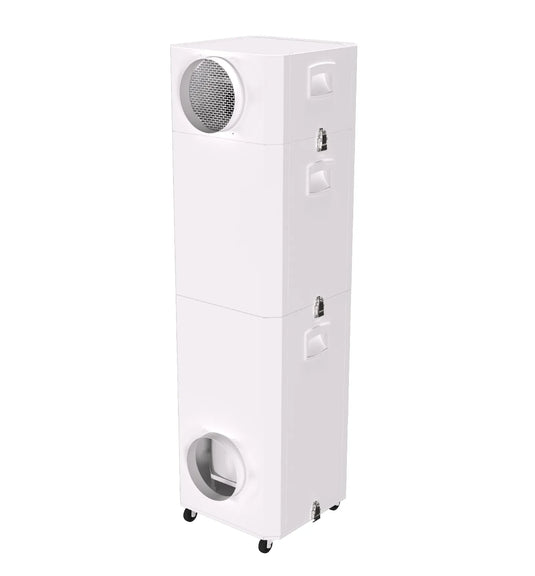Effectiveness of Air Purifiers in Virus Removal.

Airborne viruses are spread by droplets, or aerosols, and can become airborne by coughing, sneezing or simply breathing.
If you’re considering buying an air purifier with the intention of filtering viruses, the first thing you need to look at is the filter efficiency, an air purifier is only going to be as good as the filter inside. When you are dealing with filtering viruses and bacteria from the air, you want an air purifier with a medical-grade HEPA filter. Medical-grade refers to top tier H13 or H14 efficiency rated filters which will filter minimum 99.95% particles @ 0.3 microns (PM 0.3) or larger. These filters are relied upon in infection control isolation rooms and operating theatres. Made from a very fine pleated paper, they maintain minimum efficiency at 99.95% or 99.995% @ 0.3 microns for the life of the filter.
Below are the 7 different classes defined under EN1822 and their filtration efficiency. Efficiency is determined by removal rates of the most penetrating particle size (MPPS).
| Filter Class (EN 1822) | Filter Class (ISO 29463) | Overall Efficiency (%) |
| E11 | ISO 15 E | ≥ 95 |
| E12 | ISO 25 E | ≥ 99.5 |
| H13 | ISO 35 H | ≥ 99.95 |
| H14 | ISO 45 H | ≥ 99.995 |
| U15 | ISO 55 U | ≥ 99.9995 |
| U16 | ISO 65 U | ≥ 99.99995 |
| U17 | ISO 75 U | ≥ 99.999995 |
Why is Medical-Grade HEPA So Important?
Airborne viruses and ultrafine particles will pass through many lower efficiency filters and masks, the higher the filter efficiency, the higher the removal rate.
Most viruses are estimated to be 0.1-0.125 microns in size; H13/H14 HEPA is effective in filtering approx. 95% or greater of particles @ 0.1 microns. The CDC recommends N95 masks for front-line medical workers which filter 95% @ 0.3 microns to reduce exposure and chances of infection.
Key Points
- The majority of air purifiers are not medical-grade filters (H13/H14 efficiency) and contain synthetic filters with lower E11 - E12 efficiencies.
- Buyer Beware: synthetic HEPA type filters using materials like polypropylene do not maintain the stated efficiency for the life of the filter, the paper is the ONLY material which maintains efficiency for the life of the filter. Synthetic filters use an electrostatic charge on the filter material which assists efficiency but over time the charge is lost and so is the efficiency.
- Some air purifiers on the market are sold as multiple appliances for heating, cooling, dehumidifying. These purifiers are at risk of blowing unfiltered air due to the nature of how they operate with only a proportion of air going through the actual filter.
- Bigger is better: the larger the size of the filter surface area (usually measured in m2) actually increases the efficiency of the filter due to a larger contact area. When comparing air purifiers look for the largest filter in size.
- Clean Air Delivery Rate (CADR) advertised by many mass-produced air purifiers does not measure ultrafine particles the size of viruses.
Airflow
The Next Most Important Thing to be Aware of After the HEPA Filter
You need to make sure the airflow discharge of the system directs clean air from one side of the room to the other effectively. Air purifiers which direct airflow in all directions tend to recirculate their own air at lower speeds making them less effective.
A Filter is Only as Good as the Seal
When we are talking microns, a pinhole gap is like the size of a truck comparatively speaking. Many air purifiers do not have filters which seal properly in place and have small minute gaps around the filter perimeter where air can leak.
What we do Differently at INOVA Air Purifiers
At INOVA, we use airtight seals on all filters which are compressed with stainless steel compression latches to prevent air bypass.
All air purifiers we manufacture are to a commercial standard using H13 medical-grade HEPA filters. Our systems are steel and aluminium construction and powered by German-made motors. All filters are made from steel casings and filters are leak tested with an ISO certified MET ONE laser particle counter. We don’t use plastic, cardboard or foam filter materials. Every system is fully Australian made.

